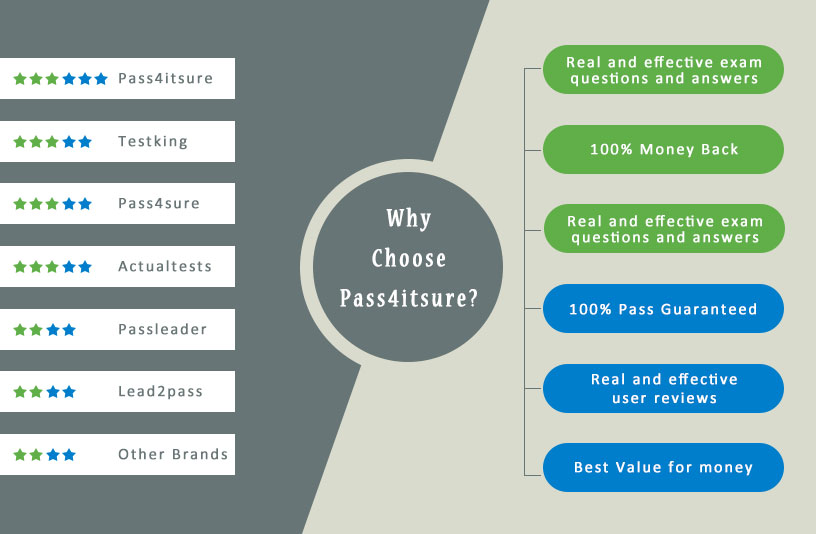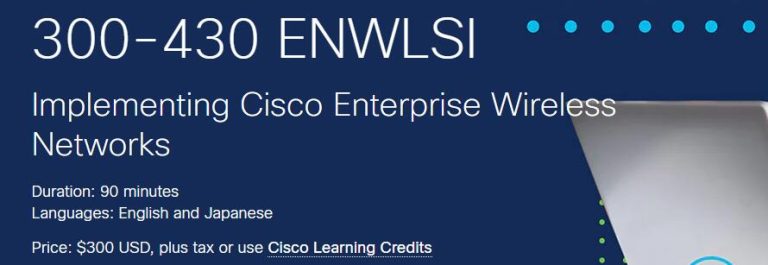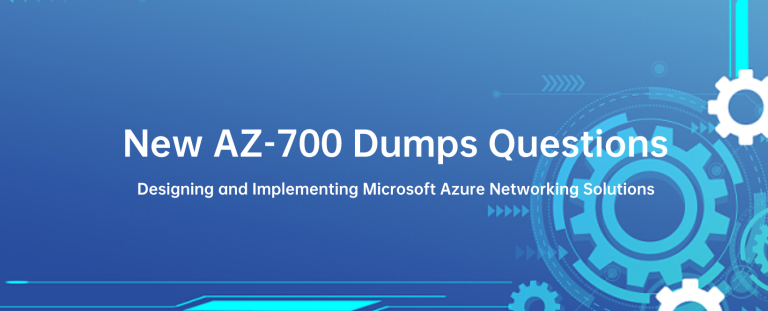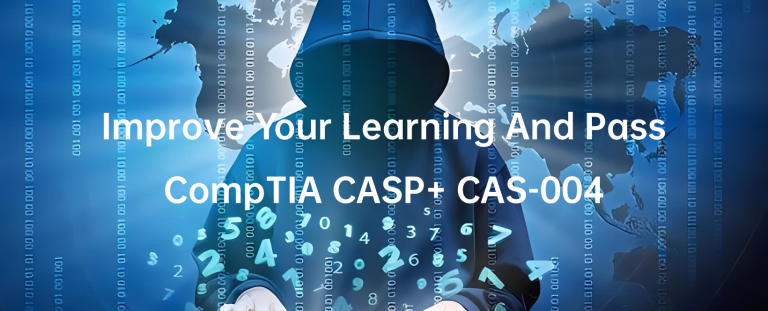Passcertguide shares the latest Cisco CCDP 300-101 exam dumps for free exam practice tests and online downloads! “Implementing Cisco IP Routing” 300-101 exam. Ready to pass the 300-101 exam please click https://www.pass4itsure.com/300-101.html (full exam dump)
Cisco 300-101 Exam pdf
[Apr PDF] Free Cisco 300-101 pdf dumps download from Google Drive: https://drive.google.com/open?id=19C24YYoGC1AAV3BrD8usFw0EjWzxATNR
[Oct PDF] Free Cisco 300-101 pdf dumps download from Google Drive: https://drive.google.com/open?id=1ENh8WLQvocgaGajO0tq-cEj4r9z6xML7
300-101 ROUTE – Cisco: https://www.cisco.com/c/en/us/training-events/training-certifications/exams/current-list/route2.html
Cisco 300-101 Online Exam Practice Questions
QUESTION 1
A network administrator notices that the BGP state drops and logs are generated for missing BGP hello keepalives.
What is the potential problem?
A. Incorrect neighbor options
B. Hello timer mismatch
C. BGP path MTU enabled
D. MTU mismatch
Correct Answer: D
BGP neighbors form; however, at the time of prefix exchange, the BGP state drops and the logs generate missing BGP
hello keepalives or the other peer terminates the session.
Here are some possible causes:
*The interface MTU on both routers do not match.
*The interface MTU on both routers match, but the Layer 2 domain over which the BGP session is formed does not
match.
*Path MTU discovery determined the incorrect max datasize for the TCP BGP session. *The BGP Path Maximum
Transmission Unit Discovery (PMTUD) could be failing due to PMTUD ICMP packets blocked (firewal or ACL) http://www.cisco.com/c/en/us/support/docs/ip/border-gateway-protocol-bgp/116377-troubleshoot-bgp-mtu.html
QUESTION 2
What are two protocols used for user with authentication on network device? (OR)
What are two options for authenticating a user who is attempting to access a network device?(Choose two)
A. CHAP
B. Radius
C. 802.1x
D. PAP
E. TACACS+
Correct Answer: BE
QUESTION 3
You have a router has some interface configured with 10Gb interface and giga interface. Which command you use to
optimize higher BW ?
A. (config)#router ospf 1 (config-router)auto-cost reference-bandwidth 10000
B. (config)#router ospf 1 (config-router)auto-cost reference-bandwidth 1000
C. (config)#int f0/0 (config-int)auto-cost reference-bandwidth 1000
D. (config)#int f0/0 (config-int)auto-cost reference-bandwidth 10000
Correct Answer: A
QUESTION 4
Which two protocols are used to deploy a single Hub-DMVPN supporting Spoke-to Spoke tunnels? (Choose Two)
A. MPLS
B. RSVP
C. NHRP
D. BFB
E. Multipoint GR
Correct Answer: CE
QUESTION 5
Which two actions are common methods for migrating a network from one protocol to another? (Choose two)
A. redistributing routes from the current routing protocol to the new routing protocol
B. removing the current routing protocol and implementing the new routing protocol
C. changing the relative administrative distances of the two routing protocols
D. changing the network IP addresses and bringing up the new IP addresses using the new routing protocol
E. disabling IP routing globally and implementing the new routing protocol
Correct Answer: AC
QUESTION 6
Which feature is supported with stateful NAT64 ?
A. IP multicast
B. NAT44 and NAT64 on the same interface
C. VRF
D. FTP and ICMP on an application layer gateway
Correct Answer: C
QUESTION 7
Refer to the exhibit. Which command would verify if PBR reacts to packets sourced from 172.16.0.0/16?
A. show ip route
B. show policy-map
C. show access-lists
D. show route-map
Correct Answer: D
QUESTION 8
An organization decides to implement NetFlow on its network to monitor the fluctuation of traffic that is disrupting core
services. After reviewing the output of NetFlow, the network engineer is unable to see OUT traffic on the interfaces.
What can you determine based on this information?
A. Cisco Express Forwarding has not been configured globally.
B. NetFlow output has been filtered by default.
C. Flow Export version 9 is in use.
D. The command ip flow-capture fragment-offset has been enabled.
Correct Answer: A
We came across a recent issue where a user setup a router for NetFlow export but was unable to see the OUT traffic for
the interfaces in NetFlow Analyzer. Every NetFlow configuration aspect was checked and nothing incorrect was found.
That is when we noticed the `no ip cef\\’ command on the router. CEF was enabled at the global level and within
seconds, NetFlow Analyzer started showing OUT traffic for the interfaces. This is why this topic is about Cisco Express
Forwarding.
What is switching?
A Router must make decisions about where to forward the packets passing through. This decision-making process is
called “switching”. Switching is what a router does when it makes the following decisions:
1.
Whether to forward or not forward the packets after checking that the destination for the packet is reachable.
2.
If the destination is reachable, what is the next hop of the router and which interface will the router use to
get to that destination.
What is CEF?
CEF is one of the available switching options for Cisco routers. Based on the routing table, CEF creates its own table,
called the Forwarding Information Base (FIB). The FIB is organized differently than the routing table and CEF uses the
FIB
to decide which interface to send traffic from. CEF offers the following benefits:
1.
Better performance than fast-switching (the default) and takes less CPU to perform the same task.
2.
When enabled, allows for advanced features like NBAR
3.
Overall, CEF can switch traffic faster than route-caching using fast-switching How to enable CEF?
CEF is disabled by default on all routers except the 7xxx series routers. Enabling and Disabling CEF is easy. To enable
CEF, go into global configuration mode and enter the CEF command.
Router# config t
Router(config)# ip cef
Router(config)#
To disable CEF, simply use the `no\\’ form of the command, ie. `no ip cef`.
Why CEF Needed when enabling NetFlow ?
CEF is a prerequisite to enable NetFlow on the router interfaces. CEF decides through which interface traffic is exiting
the router. Any NetFlow analyzer product will calculate the OUT traffic for an interface based on the Destination
Interface
value present in the NetFlow packets exported from the router. If the CEF is disabled on the router, the NetFlow packets
exported from the router will have “Destination interface” as “null” and this leads NetFlow Analyzer to show no OUT
traffic for the interfaces. Without enabling the CEF on the router, the NetFlow packets did not mark the destination
interfaces and so NetFlow Analyzer was not able to show the OUT traffic for the interfaces
QUESTION 9
The Cisco SA 500 Series Security Appliances are built specifically for businesses with less than 100 employees. What
are three important benefits of this device? (Choose three.)
A. business-grade firewall
B. premium support via SMART net
C. site-to-site VPN for remote offices
D. Cisco IOS software-based
E. email security
F. XML support
Correct Answer: ACE
QUESTION 10
Which Cisco IOS VPN technology leverages IPsec, mGRE, dynamic routing protocol, NHRP, and Cisco Express
Forwarding?
A. FlexVPN
B. DMVPN
C. GETVPN
D. Cisco Easy VPN
Correct Answer: B
Dynamic Multipoint Virtual Private Network (DMVPN) is a dynamic tunneling form of a virtual private network (VPN)
supported on Cisco IOS-based routers and Unix-like Operating Systems based on the standard protocols, GRE, NHRP
and
Ipsec. This DMVPN provides the capability for creating a dynamicmesh
VPN network without having to pre-configure (static) all possible tunnel end-point peers, including Ipsec (Internet
Protocol Security) and ISAKMP (Internet Security Association and Key Management Protocol) peers. DMVPN is initially
configured to build out a hub-and-spoke network by statically configuring
the hubs (VPN headends) on the spokes, no change in the configuration on the hub is required to accept new spokes.
Using this initial hub-and-spoke network, tunnels between spokes can be dynamically built on demand (dynamic-mesh)
without additional configuration on the hubs or spokes. This dynamic-mesh capability alleviates the need for any load on
the hub to route data between the spoke networks.
DMVPN is combination of the following technologies:
Multipoint GRE (mGRE)
Next-Hop Resolution Protocol (NHRP)
Dynamic Routing Protocol (EIGRP, RIP, OSPF, BGP)
Dynamic Ipsec encryption
Cisco Express Forwarding (CEF)
Reference: http://en.wikipedia.org/wiki/Dynamic_Multipoint_Virtual_Private_Network
QUESTION 11
What are two differences between SNMP traps and SNMP informs? (Choose two)
A. Only informs provide a confirmation of receipt
B. Informs are more reliable than traps because they require a TCP three-way handshake
C. Only traps are discarded after delivery
D. Traps are more reliable than informs because they generate PDUs from the network manager
E. Only informs are discarded after delivery
Correct Answer: AE
QUESTION 12
Click and drag the correct techniques for transitioning networks or devices from IPv4 to IPv6 from the left to the target
zone on the right.
Select and Place:
Correct Answer:

QUESTION 13
Which address is used by the Unicast Reverse Path Forwarding protocol to validate a packet against the routing table?
A. source address
B. destination address
C. router interface
D. default gateway
Correct Answer: A
The Unicast RPF feature helps to mitigate problems that are caused by the introduction of malformed or forged
(spoofed) IP source addresses into a network by discarding IP packets that lack a verifiable IP source address. For
example, a number of common types of denial-of-service (DoS) attacks, including Smurf and Tribal Flood Network
(TFN), can take advantage of forged or rapidly changing source IP addresses to allow attackers to thwart efforts to
locate or filter the attacks. For Internet service providers (ISPs) that provide public access, Unicast RPF deflects such
attacks by forwarding only packets that have source addresses that are valid and consistent with the IP routing table.
This action protects the network of the ISP, its customer, and the rest of the Internet. Reference:
http://www.cisco.com/en/US/docs/ios/12_2/security/configuration/guide/scfrpf.html
Share Pass4itsure discount codes for free

About Pass4itsure!
Pass4itsure offers the latest exam practice questions and answers free of charge! Update all exam questions throughout the year,
with a number of professional exam experts! To make sure it works! Maximum pass rate, best value for money! It helps you pass the exam easily on your first attempt.

Summarize:
How do I pass the Cisco 300-101 exam? You need to be prepared for it!
You need the latest and most effective learning materials and proper practices to pass the 300-101 exam. “This exam certifies the routing knowledge and skills of successful candidates. They are certified in using advanced IP addressing and routing in implementing scalable and highly secure Cisco routers that are connected to LANs, WANs, and IPv6”. Pass4itsure offers you the latest exam materials! You can use the materials to prepare to help you achieve excellent results!





